The Appeal of Outdoor Brick Fireplaces
Outdoor brick fireplaces have long been a cherished feature in backyards and patios, offering both functional and aesthetic benefits. They serve as a focal point for outdoor living spaces, providing a place for family and friends to gather and enjoy the warmth and ambiance of a fire. The timeless appeal of brick, with its natural texture and durability, makes it an ideal material for outdoor fireplaces.
One of the primary appeals of an outdoor brick fireplace is the enhancement it brings to outdoor entertaining. Whether hosting a summer barbecue or a cozy autumn evening, an outdoor fireplace creates a welcoming atmosphere. The presence of a crackling fire encourages relaxation and conversation, making social gatherings more enjoyable and memorable.
Another significant advantage is the extension of the outdoor living season. An outdoor brick fireplace allows you to enjoy your patio or backyard well into the cooler months. The warmth provided by the fire makes it possible to comfortably spend time outdoors even when temperatures drop, effectively expanding your usable living space.

Outdoor brick fireplaces also add considerable value to a property. They are often seen as desirable features by potential homebuyers, increasing the marketability and resale value of a home. The addition of a well-designed outdoor fireplace can transform a standard backyard into a luxurious outdoor living area, making the property stand out in the real estate market.
The durability and low maintenance of brick make it a practical choice for outdoor fireplaces. Brick can withstand high temperatures and harsh weather conditions without deteriorating. Unlike other materials that may require frequent upkeep or replacement, brick retains its integrity and appearance over time, providing long-lasting beauty and functionality.
Moreover, outdoor brick fireplaces offer design versatility. They can be customized to match various architectural styles and personal preferences. From traditional and rustic designs to modern and sleek structures, the options are endless. This flexibility allows homeowners to create a unique outdoor fireplace that complements their home’s exterior and landscape.
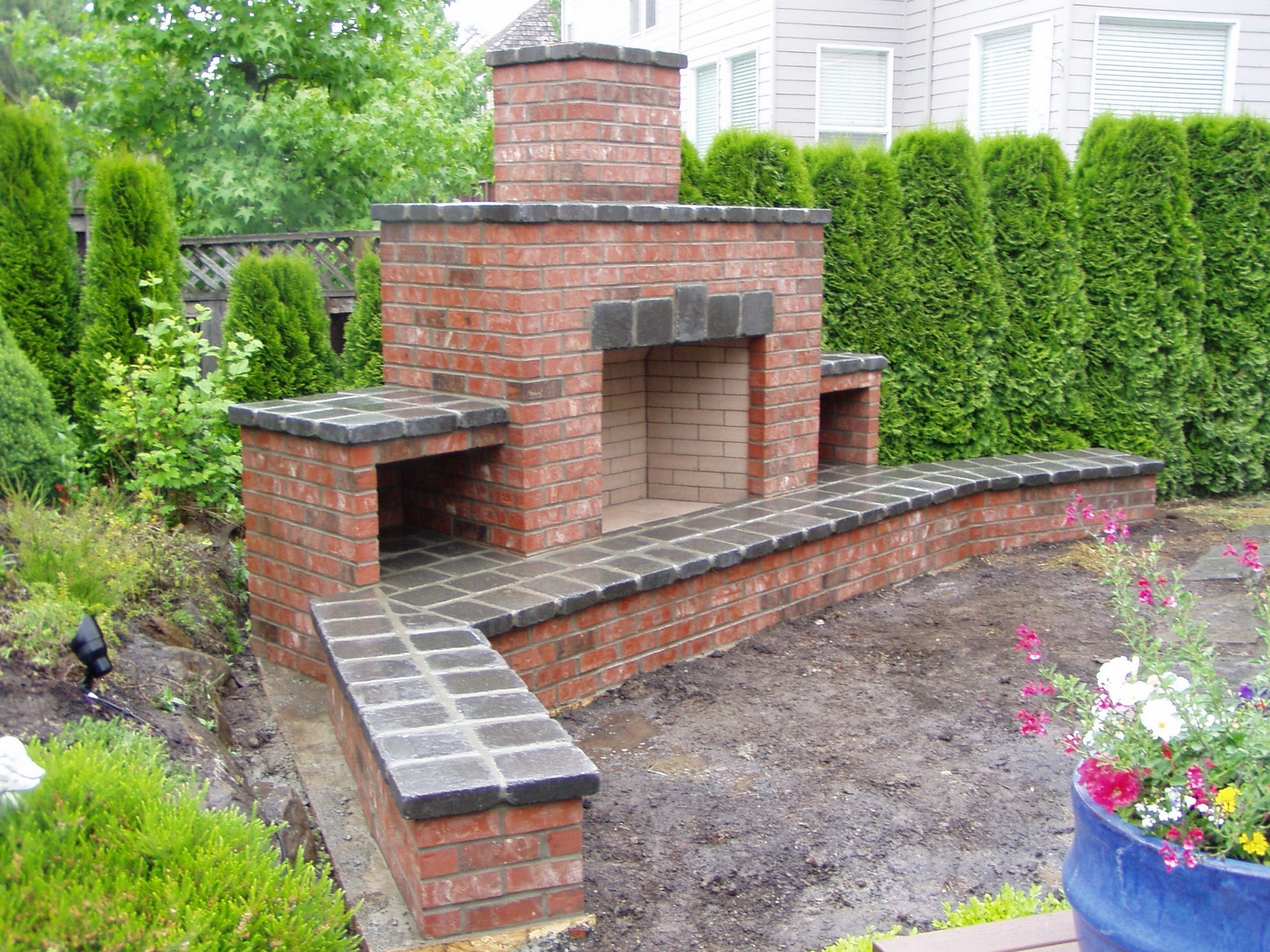
Planning Your Outdoor Brick Fireplace
Thorough planning is essential to the successful design and construction of an outdoor brick fireplace. The first step in planning is determining the location. The fireplace should be situated in a safe area away from structures, trees, and other flammable materials. Additionally, consider the prevailing wind direction to ensure smoke is directed away from seating areas and neighboring properties.
Once the location is chosen, the next step is deciding on the size and scale of the fireplace. This decision should be based on the available space, intended use, and overall design aesthetic. A large, elaborate fireplace can serve as a grand focal point, while a smaller, simpler design might be more suitable for a compact patio. Ensuring the fireplace is proportional to the outdoor space will create a balanced and harmonious look.
The design and style of the fireplace are crucial elements to consider. Outdoor brick fireplaces can be built in various styles, such as traditional, contemporary, or rustic. The design should complement the existing architecture of the home and the landscape. Incorporating features like hearths, mantels, and built-in seating can enhance the functionality and visual appeal of the fireplace.
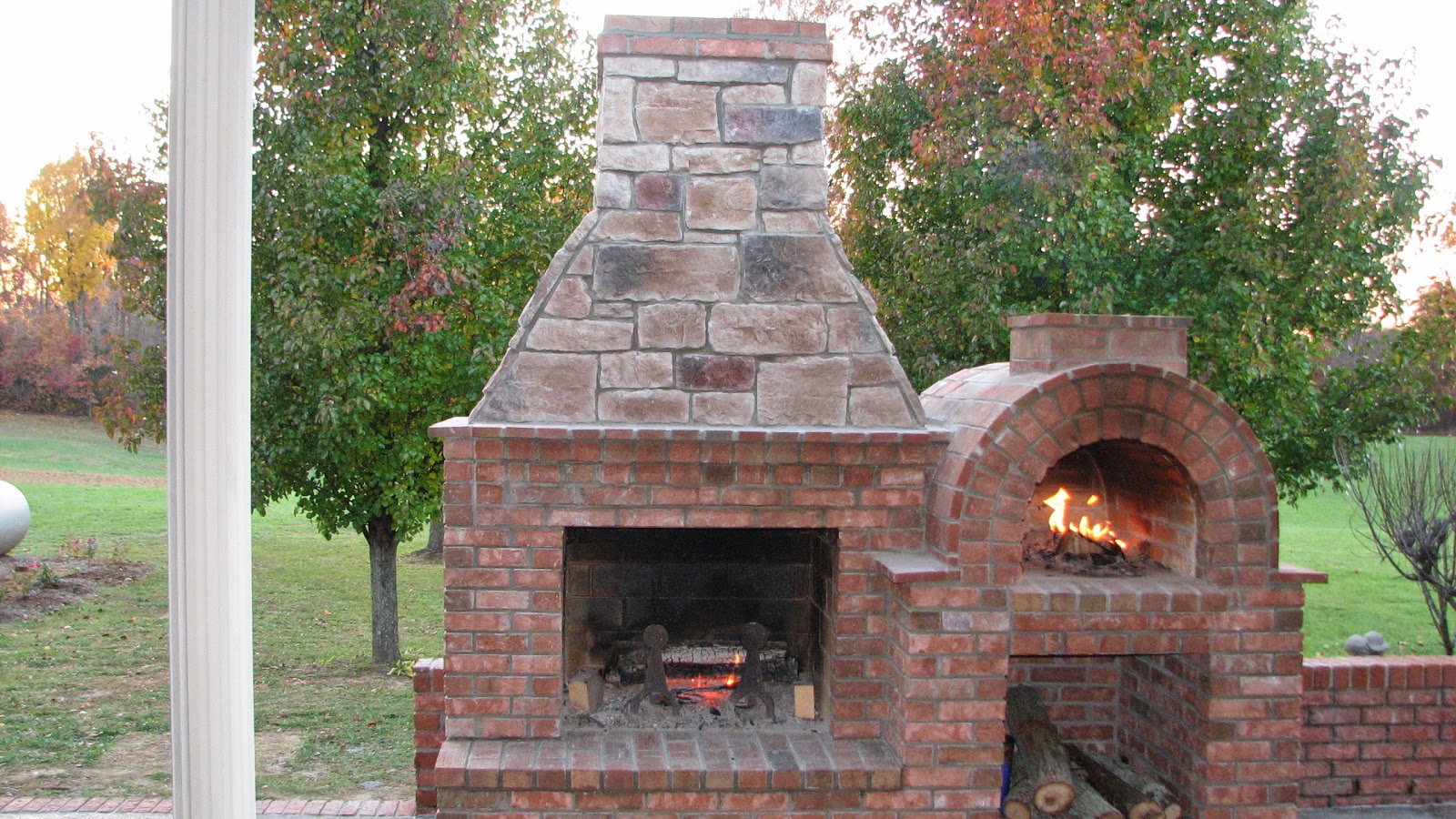
Another important aspect of planning is choosing the right materials. While brick is the primary material, other elements like mortar, firebricks, and metal components are essential for construction. Firebricks, which are specifically designed to withstand high temperatures, should be used for the firebox to ensure safety and durability. Selecting high-quality materials will contribute to the longevity and performance of the fireplace.
Obtaining necessary permits and adhering to local building codes is a critical part of the planning process. Many areas have specific regulations regarding the construction of outdoor fireplaces, including requirements for setbacks, height restrictions, and safety features. Consulting with local authorities and obtaining the appropriate permits will help avoid legal issues and ensure the fireplace is built to code.
Hiring a professional designer or contractor can significantly benefit the planning and construction process. Experienced professionals can provide valuable insights, help refine design ideas, and ensure the project is completed safely and efficiently. While some homeowners may opt for a DIY approach, professional assistance can help navigate complex aspects of construction and achieve a high-quality result.

Construction Techniques and Materials
Constructing an outdoor brick fireplace involves several key techniques and materials to ensure a safe, durable, and aesthetically pleasing structure. The foundation is the starting point and one of the most critical components. A solid foundation provides stability and support for the fireplace, preventing settling or shifting over time. Typically, the foundation consists of a concrete slab that is poured to the appropriate thickness and reinforced with steel rebar for added strength.
The firebox is the heart of the fireplace, where the fire is contained. Constructing the firebox requires using firebricks and refractory mortar, both of which are designed to withstand high temperatures. Firebricks are laid in a specific pattern to ensure even heat distribution and prevent cracking. The firebox must also include an appropriate venting system to allow smoke and gases to escape safely.
The chimney is another essential component, responsible for directing smoke and gases away from the seating area. Proper chimney construction is crucial for efficient draft and safe operation. The chimney should be built with brick and include a flue liner, typically made of clay or stainless steel, to protect the brick from heat and corrosive byproducts. The height of the chimney must comply with local building codes to ensure adequate draft and safety.
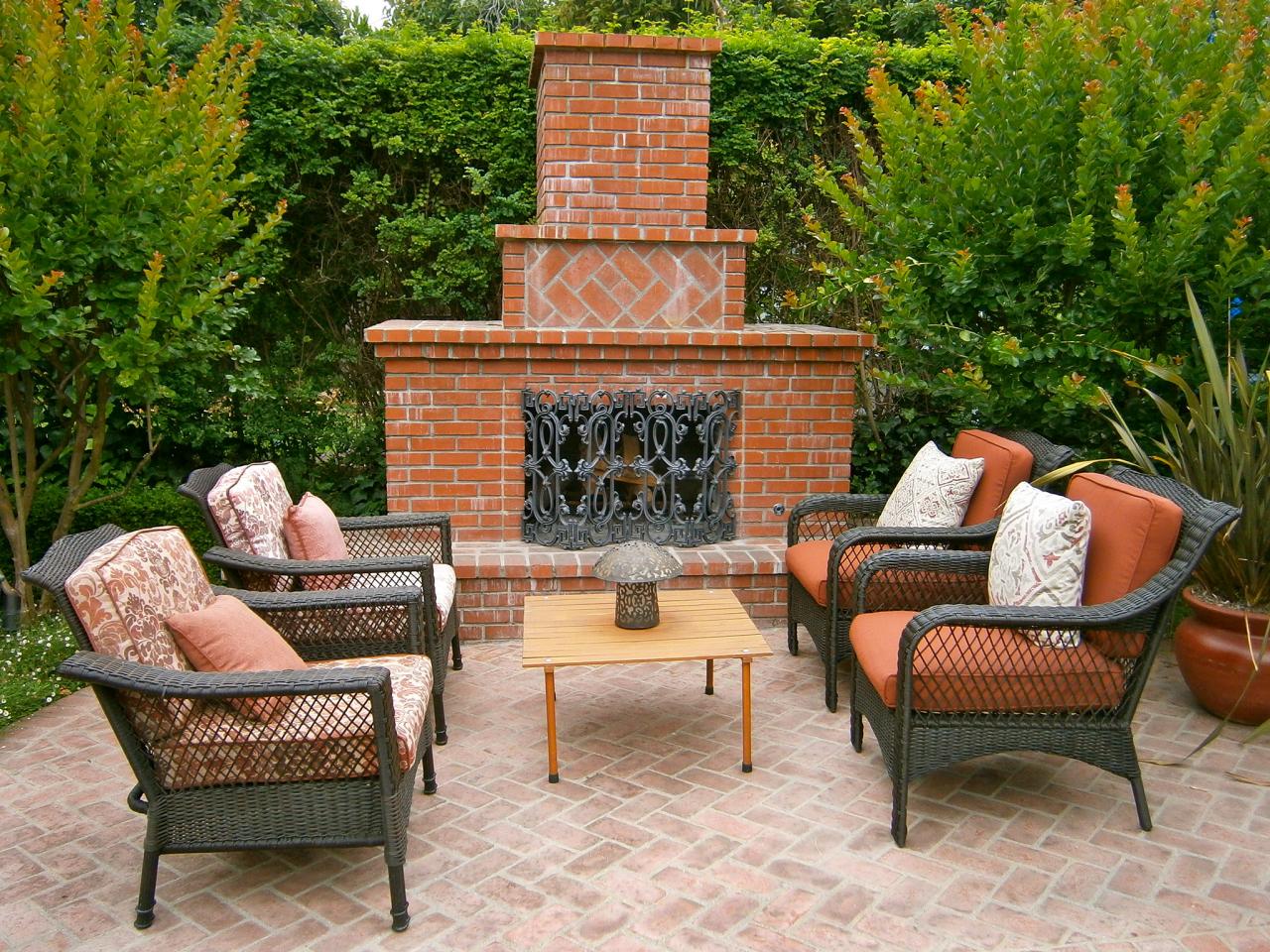
The exterior structure of the fireplace, including the facade, hearth, and mantel, can be constructed using standard bricks and mortar. The facade can be designed with various bricklaying patterns and finishes to achieve the desired aesthetic. The hearth, which extends out from the firebox, provides a safe area for placing logs and tools and can be built at ground level or raised for added visual interest.
Incorporating additional features like built-in seating, storage for firewood, and decorative elements can enhance the functionality and appeal of the fireplace. Built-in seating provides a convenient and comfortable place for guests to gather around the fire, while integrated storage keeps firewood dry and easily accessible. Decorative elements such as arches, columns, and stone accents can add character and sophistication to the design.
Attention to detail and craftsmanship is essential throughout the construction process. Ensuring that bricks are laid evenly, mortar joints are smooth and consistent, and all components are properly aligned will result in a structurally sound and visually appealing fireplace. Working with skilled masons or contractors who have experience in building outdoor brick fireplaces can help achieve a high-quality finish.

Interesting Articles You May Want to Check:
- Outdoor Natural Gas Fireplace Kits
- Outdoor Fireplace with Roof
- Outdoor Fireplace under Covered Patio
- Build an Outdoor Fireplace DIY
- Outdoor Fireplace near Me

Design Ideas and Inspirations
When designing an outdoor brick fireplace, there are countless design ideas and inspirations to draw from. Traditional fireplaces often feature classic design elements such as a large, arched opening, a substantial hearth, and a prominent chimney. These fireplaces evoke a timeless, elegant look that complements a variety of architectural styles and outdoor settings.
Rustic outdoor brick fireplaces are characterized by their rugged, natural appearance. They often incorporate rough-hewn bricks, stone accents, and reclaimed materials to create a cozy, country-inspired aesthetic. Rustic fireplaces blend seamlessly with natural landscapes and are perfect for creating a warm, inviting atmosphere in a backyard or garden setting.
Contemporary brick fireplaces focus on clean lines, minimalist designs, and modern materials. These fireplaces often feature sleek, geometric shapes, smooth finishes, and innovative layouts. Contemporary designs can include elements such as metal accents, glass doors, and integrated lighting to enhance the modern look and feel. They are well-suited for urban patios and modern home exteriors.

Mediterranean-inspired fireplaces draw from the architectural styles of Southern Europe. These designs often feature stucco finishes, terracotta accents, and ornate detailing. The use of warm, earthy colors and intricate patterns can create a vibrant, inviting outdoor space that evokes the charm of a Mediterranean villa.
For those who prefer a more eclectic approach, combining different design elements can create a unique and personalized outdoor fireplace. Mixing traditional brickwork with contemporary metal features, or blending rustic stone with sleek glass doors, allows for creative expression and a one-of-a-kind design. Personal touches such as custom mantels, decorative tiles, and unique lighting can further enhance the individuality of the fireplace.
Incorporating landscaping and outdoor furniture into the overall design can enhance the functionality and visual appeal of the fireplace area. Surrounding the fireplace with lush plants, colorful flowers, and comfortable seating creates a cohesive and inviting outdoor living space. Elements such as pergolas, arbors, and outdoor kitchens can also be integrated to expand the usability and enjoyment of the area.

Safety Considerations and Regulations
Safety is paramount when designing and constructing an outdoor brick fireplace. Adhering to safety considerations and regulations ensures the fireplace operates safely and reduces the risk of accidents or damage. The first safety consideration is the location of the fireplace. It should be placed at a safe distance from buildings, trees, and other flammable materials. Local building codes often specify minimum setback distances to prevent fire hazards.
Proper ventilation is essential for safe operation. The fireplace must have an adequate chimney and flue system to allow smoke and gases to escape safely. The chimney should be constructed to a height that ensures proper draft and complies with local building codes. Installing a chimney cap can prevent debris and animals from entering the flue, reducing the risk of blockages and ensuring safe ventilation.
Using fire-resistant materials is crucial for construction. Firebricks and refractory mortar should be used for the firebox, as they can withstand high temperatures without deteriorating. Standard bricks and mortar can be used for the exterior structure, but all materials should be of high quality to ensure durability and safety. Avoid using materials that are not rated for high-temperature use, as they can crack or degrade over time.

Incorporating safety features such as a spark screen or glass doors can help contain embers and sparks, reducing the risk of accidental fires. A sturdy hearth extending out from the firebox provides a safe area for placing logs and tools and helps prevent accidental burns or fires from stray embers. Ensuring that all components are properly installed and maintained is essential for safe operation.
Compliance with local building codes and regulations is mandatory. Building codes specify requirements for construction, materials, and safety features to ensure that outdoor fireplaces are safe and functional. Obtaining the necessary permits and inspections during the construction process helps ensure compliance and can prevent potential issues with local authorities. Always check with local building departments to understand the specific regulations and requirements for outdoor fireplaces in your area.
Regular maintenance and inspection are key to ensuring ongoing safety. After the fireplace is constructed, it is essential to schedule annual inspections to check for any signs of damage or wear. Professional chimney sweeps can clean the flue, check for blockages, and ensure that all safety features are functioning correctly. Regular maintenance helps prevent issues such as chimney fires, gas leaks, and structural damage.

Common Mistakes to Avoid
When planning and building an outdoor brick fireplace, avoiding common mistakes can help ensure a successful and enjoyable project. One frequent mistake is overlooking the importance of proper ventilation. Inadequate ventilation can lead to smoke and gases accumulating around the fireplace, which can be harmful to health and diminish the fireplace’s efficiency. Always ensure that the chimney and flue are correctly sized and positioned to allow for optimal airflow and ventilation.
Another mistake is failing to consider the fireplace’s scale and proportion relative to the outdoor space. A fireplace that is too large for a small patio or too small for a large yard can look out of place and impact the overall aesthetics of the area. Carefully measure the space and choose a design that fits well with the dimensions of the outdoor area to achieve a balanced and harmonious look.
Using incorrect materials is also a common issue. It’s essential to use fire-rated bricks and mortar for the firebox and flue to withstand high temperatures and ensure safety. Standard bricks and mortar are suitable for the exterior structure, but using non-fire-rated materials can lead to premature deterioration and safety hazards. Always choose materials that are specifically designed for high-temperature use.
Neglecting to obtain the necessary permits and adhere to local building codes can lead to legal issues and potential safety risks. Many areas have specific regulations regarding the construction of outdoor fireplaces, including setback requirements and chimney height restrictions. Failing to follow these regulations can result in fines, required modifications, or even the removal of the fireplace.
Improper installation of the fireplace components can lead to performance and safety issues. For example, a poorly constructed chimney or flue can result in inadequate draft, leading to smoke backflow or even chimney fires. Ensuring that all components are installed correctly and by a professional can prevent these problems and ensure the fireplace operates safely and efficiently.
Finally, neglecting regular maintenance and inspections can lead to serious issues over time. Without regular checks, problems such as blockages, wear, and corrosion can go unnoticed, potentially resulting in unsafe conditions or costly repairs. Scheduling annual inspections and performing routine maintenance will help keep the fireplace in good working order and extend its lifespan.
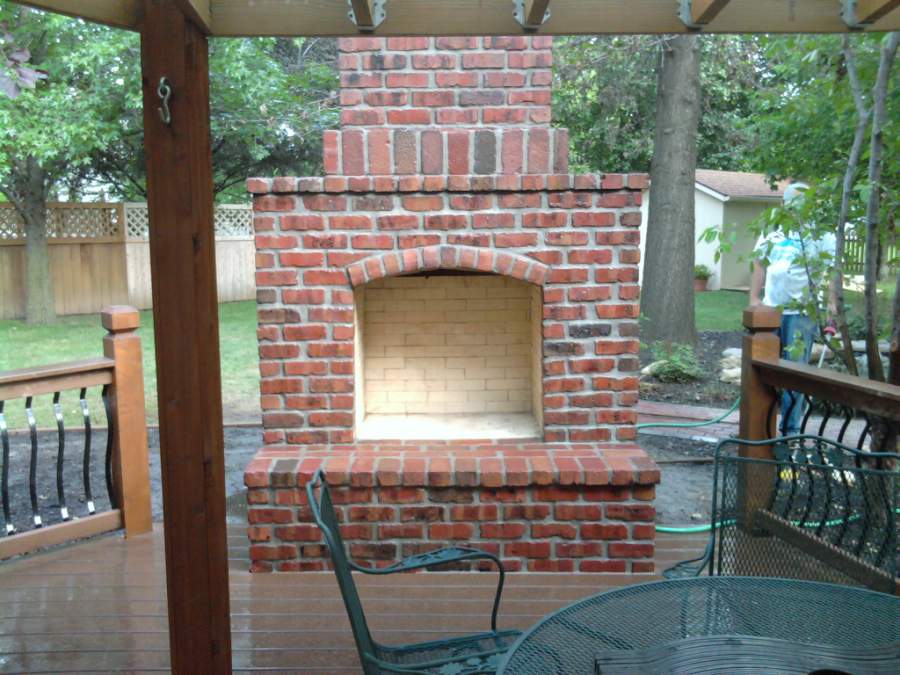
What factors should I consider when choosing a location for an outdoor brick fireplace?
When selecting a location for an outdoor brick fireplace, consider factors such as safety, ventilation, and aesthetics. The fireplace should be placed away from buildings, trees, and other flammable materials to prevent fire hazards. Additionally, ensure that the location allows for proper ventilation, with the chimney directing smoke away from seating areas and neighboring properties. The fireplace should also complement the overall design of your outdoor space and fit proportionally within the area.
How do I ensure my outdoor brick fireplace is safe to use?
To ensure safety, first, adhere to local building codes and regulations during construction. Use fire-rated materials for the firebox and flue to withstand high temperatures. Properly install the chimney and flue system to ensure adequate ventilation and draft. Incorporate safety features such as spark screens or glass doors to contain embers. Schedule regular maintenance and inspections to check for any signs of wear, damage, or blockages, and address any issues promptly.
Can I build an outdoor brick fireplace myself, or should I hire a professional?
Building an outdoor brick fireplace is a complex project that involves precise construction techniques and adherence to safety codes. While some homeowners may choose a DIY approach, hiring a professional is often recommended to ensure that the fireplace is built correctly and safely. Experienced contractors can provide valuable expertise, help with design decisions, and ensure that the project complies with local regulations and standards.
How do I maintain and clean my outdoor brick fireplace?
Maintaining and cleaning an outdoor brick fireplace involves several key steps. Regularly inspect the fireplace for signs of damage or wear. Clean the firebox and chimney to remove soot and debris that can block ventilation. Ensure that the flue is clear and unobstructed. Check for any issues with the chimney cap or spark screen and replace them if necessary. Scheduling annual inspections by a professional chimney sweep can help ensure that the fireplace remains in good condition.
What types of bricks are best for constructing an outdoor fireplace?
For constructing an outdoor fireplace, use fire-rated bricks and refractory mortar for the firebox. Firebricks are specifically designed to withstand high temperatures and prevent cracking. Standard bricks can be used for the exterior structure, but they should be of high quality to ensure durability and resistance to weathering. Choosing bricks that are rated for outdoor use and temperature variations will ensure the longevity and safety of the fireplace.
How can I enhance the design of my outdoor brick fireplace?
Enhancing the design of an outdoor brick fireplace can involve incorporating various features and elements. Consider adding a custom mantel, built-in seating, or storage for firewood to improve functionality and aesthetics. Use decorative brick patterns or stone accents to add visual interest. Integrate landscaping elements such as plants and lighting to create a cohesive and inviting outdoor space. Personal touches and thoughtful design choices will enhance the overall look and usability of the fireplace.
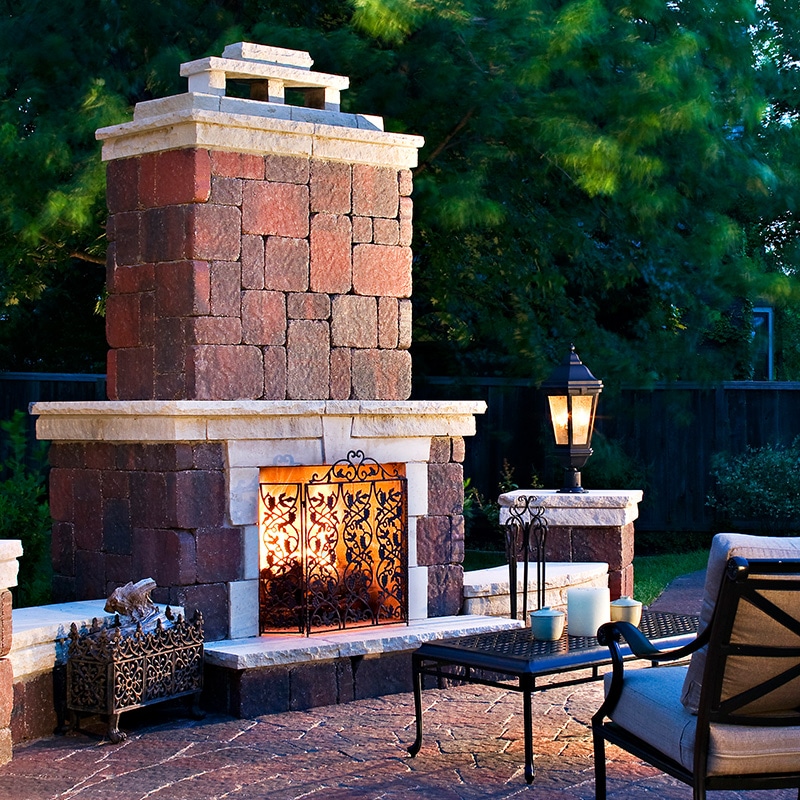
Related Posts: